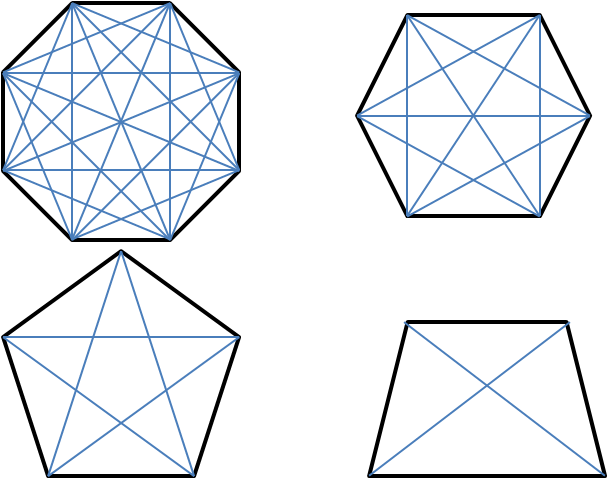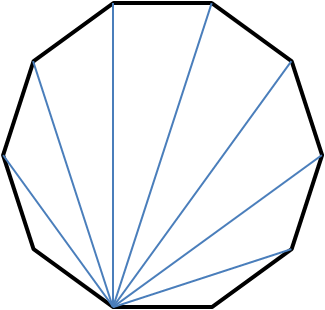Copyright © University of Cambridge. All rights reserved.
'Bishop's Paradise' printed from https://nrich.maths.org/
Show menu
 Drawing the diagonals for each of the shapes and counting shows that an octagon has $20$ diagonals, a hexagon has $9$, a pentagon has $5$ and a quadrilateral has $2$.
Drawing the diagonals for each of the shapes and counting shows that an octagon has $20$ diagonals, a hexagon has $9$, a pentagon has $5$ and a quadrilateral has $2$.This can be used to show that A to D are all correct. A quadrilateral has half as many diagonals as it has sides, not twice as many, so statement E is false.
 Alternatively, each vertex in a polygon shares a diagonal with $n-3$ others, if there are $n$ vertices, since it does not share one with itself or either of its neighbours. There are $n$ vertices, so this is $n(n-3)$. But this means we have counted each diagonal twice, so there are
$\frac 12 n(n-3)$ in total. This gives the numbers obtained directly above.
Alternatively, each vertex in a polygon shares a diagonal with $n-3$ others, if there are $n$ vertices, since it does not share one with itself or either of its neighbours. There are $n$ vertices, so this is $n(n-3)$. But this means we have counted each diagonal twice, so there are
$\frac 12 n(n-3)$ in total. This gives the numbers obtained directly above.This problem is taken from the UKMT Mathematical Challenges.
You can find more short problems, arranged by curriculum topic, in our short problems collection.